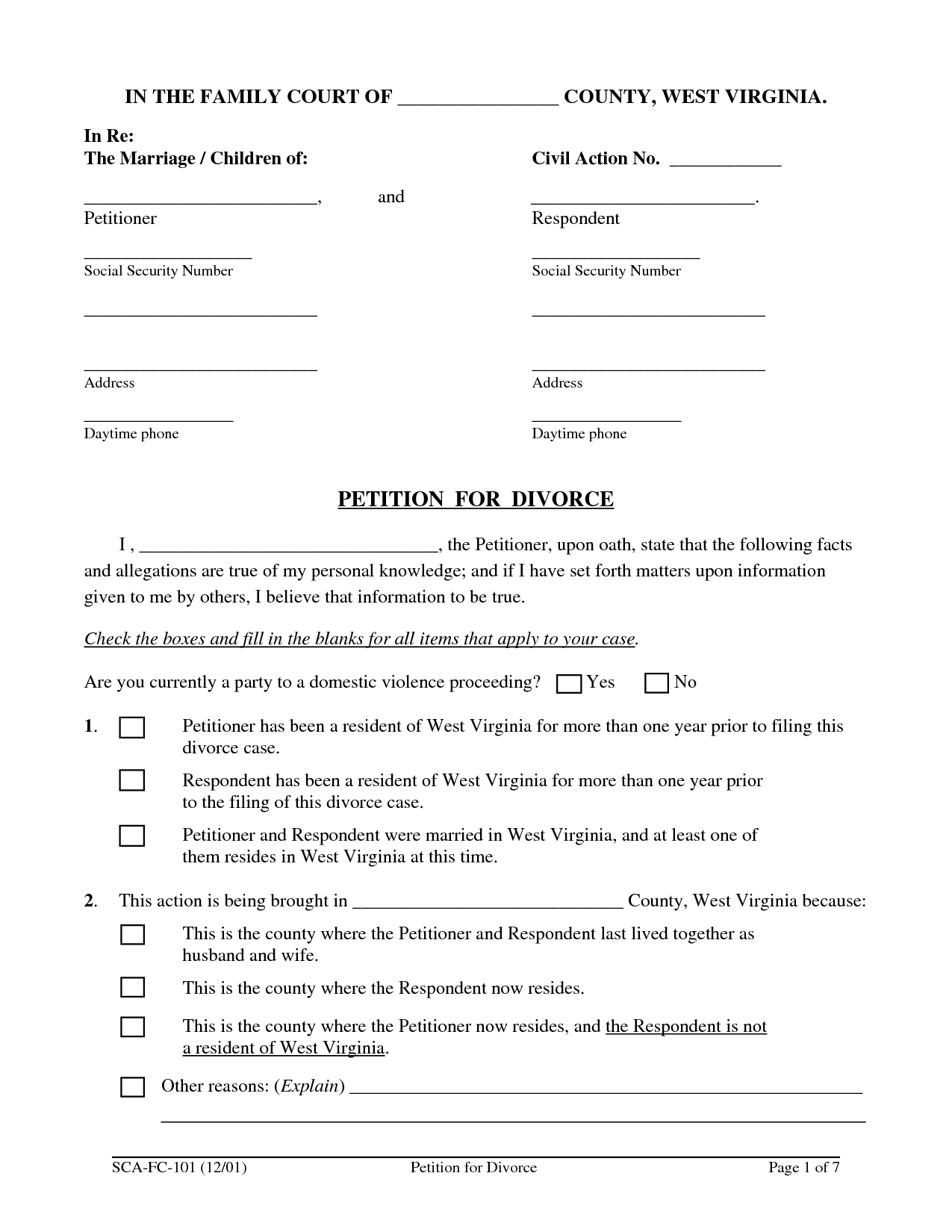Essential Divorce Paperwork Guide: Simplify Your Filing Process

Introduction to Filing for Divorce

Filing for divorce can be a complex and emotionally draining process. However, having a clear understanding of the necessary paperwork and legal steps can make this challenging period more manageable. This guide will provide a comprehensive overview of the essential divorce paperwork needed to streamline your filing process and ensure that you're fully prepared.
Understanding the Types of Divorce

Before delving into the paperwork, it's crucial to understand the type of divorce you're filing for, as each has unique requirements:
- Contested Divorce: Both parties disagree on at least one major issue, like child custody or division of assets. This type often requires legal representation and court appearances.
- Uncontested Divorce: Both spouses agree on all terms, simplifying the process significantly, reducing both time and costs.
- No-Fault Divorce: Grounds for divorce are not based on fault, typically requiring only a separation period and mutual consent to dissolve the marriage.
- Fault-Based Divorce: One spouse must prove wrongdoing by the other to secure a divorce, which can influence alimony, property division, and child custody arrangements.

Key Documents for Divorce Filing

1. Petition for Dissolution of Marriage

This is the initial document that legally starts the divorce process. It includes:
- Details of both spouses.
- Reasons for the divorce.
- Any relevant information regarding children, assets, and debts.
📝 Note: This form varies by state, so ensure you use the one specific to your jurisdiction.
2. Summons

Notifies your spouse (the respondent) about the divorce filing. It:
- Provides a deadline for the response.
- Includes information on where and how to respond.
- Informs about potential default judgments if they fail to respond.
3. Financial Affidavit or Statement

Both spouses must complete this document, detailing:
- Income sources and amounts.
- Expenses, liabilities, and assets.
| Required Information | Description |
|---|---|
| Income | Include salary, investments, pensions, etc. |
| Expenses | Monthly expenditures like rent, utilities, and insurance. |
| Assets | List all properties, savings, investments, and personal valuables. |
| Debts | Mortgages, loans, credit cards, etc. |

4. Child Custody and Support Documents

If applicable, you’ll need:
- A Parenting Plan.
- Child Support Worksheet detailing financial responsibilities.
🔹 Note: The court often requires specific forms for child custody and support, which must comply with state laws.
5. Property Settlement Agreement

Outlines how assets and debts will be divided. It covers:
- Real estate.
- Vehicles.
- Financial accounts.
- Personal property.
- Retirement plans.
- Debts and liabilities.
6. Marital Settlement Agreement

Includes terms for:
- Alimony or spousal support.
- Child custody and support (if applicable).
- Division of assets and debts.
💡 Note: Having an attorney review this agreement can help ensure it’s fair and legally binding.
Final Steps and Filing

Once all paperwork is prepared:
- Filing: Submit documents to the court. Check your local court’s filing requirements and any fees.
- Service of Process: Ensure your spouse receives the legal papers. This can be done through a sheriff, a professional process server, or certified mail.
- Response: Your spouse has a limited time to file an answer. If not, you might proceed with a default judgment.
- Settlement or Court: Ideally, you settle out of court. If not, you’ll need to attend hearings for unresolved issues.
- Final Decree: After all disputes are resolved, a judge will issue a final decree of divorce, dissolving the marriage officially.
Throughout the divorce process, maintaining accurate documentation, understanding your legal rights, and perhaps consulting with an attorney can significantly reduce potential complications. This comprehensive guide aims to help you navigate through the required paperwork and legal steps, making your journey through divorce as straightforward as possible.
What if my spouse won’t sign or accept the divorce papers?

+
If your spouse refuses to acknowledge or accept the divorce papers, they can be served through alternative methods like certified mail with return receipt or publication in a newspaper if they cannot be located. The court may proceed with a default judgment if there is no response within a specified timeframe.
How long does the divorce process take?

+
The duration of a divorce varies by state and complexity. An uncontested divorce can be completed in weeks, while contested divorces might take several months or even years if issues are litigated. Average time frames range from 3 to 18 months.
Can I represent myself in divorce court?

+
Yes, you can proceed pro se (representing yourself). However, legal representation is advisable, especially in complex or high-conflict cases, to ensure your rights are protected and the legal process is correctly followed.